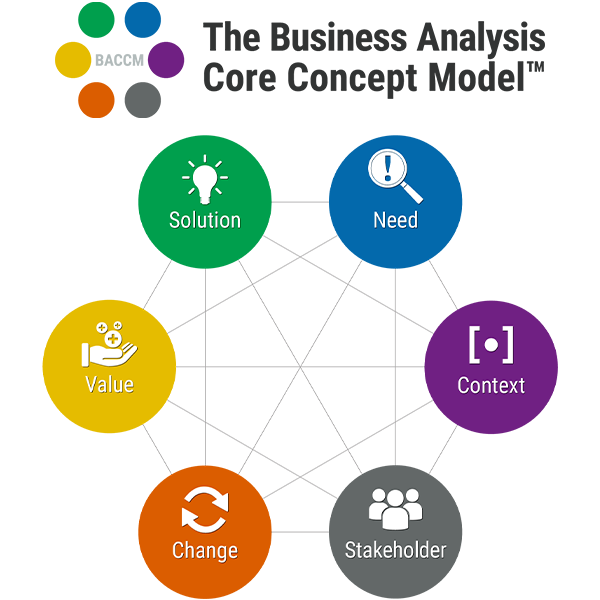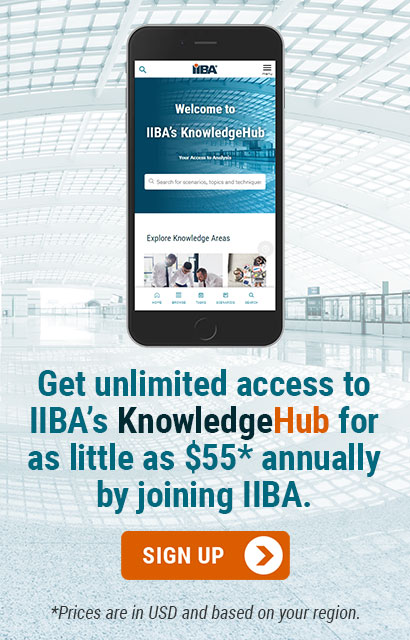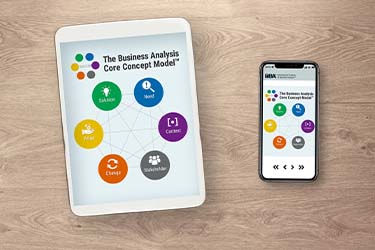
2. Understanding Business Analysis
2.2 A Model for Effective Analysis - BACCM™
The Business Analysis Standard
The six core concepts highlighted in the definition of business analysis - Change, Need, Solution, Value, Stakeholder, and Context - form a powerful model for effective business analysis, the Business Analysis Core Concept Model™.

The BACCM™ provides essential guidance for business analysis professionals and leaders. To truly understand and apply the foundations of business analysis, it’s important to explore all six concepts and their relationships. Ignoring any concept or their connections can reduce the model’s effectiveness. Viewing business analysis as a system of interrelated concepts is crucial for success.
The six core concepts in the BACCM are:

- Organizations implement change to stay competitive, foster innovation, improve efficiency, and ensure long-term success in a dynamic and evolving environment
- These enhancements are managed and completed through business analysis activities

- Needs can cause changes by motivating stakeholders to act
- Changes can also cause needs by reducing or increasing the value delivered by existing solutions

- A solution satisfies a need by:
- Resolving a problem faced by stakeholders, or
- Enabling stakeholders to take advantage of an opportunity
- A solution can include a combination of components that deliver the desired value, for example:
- Technology-based initiatives
- Manual procedures
- Process changes
- Business model update
- Improving organizational capabilities

- Stakeholders (both internal and external) are often defined by their interest, impact, and influence over the change
- Stakeholders are grouped based on their relationship to the needs, changes, and solutions

- Value can be:
- Realized through potential returns, gains, and improvements, or
- Preserved by mitigating losses, risks, and costs
- Value can be tangible or intangible:
- Tangible value is directly measurable and often has a significant monetary component
- Intangible value is measured indirectly and often has a significant motivational component (e.g., company’s reputation or employee morale)
- Value can be assessed in absolute or relative terms (e.g., one solution option is more valuable than another from the perspective of a group of stakeholders)

Context is everything within the environment relevant to the change which can include:
|
|
|






















